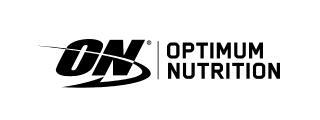
- Health advice
- Sep 25, 2015
Part 2 of our investigation into Glyphosate use in Australian agriculture.... At Mr Vitamins, we have previously discussed the potential dangers of consuming Glyphosate (aka Roundup). So you probably know that eating non-organic fruits and vegetables or foods made with genetically-modified ingredients increases your risk of developing several serious medical conditions. Nevertheless, we dug a little deeper to determine just how “at risk” Australians are in exposure to or consumption of glyphosate. As a result of articles published in the US regarding the spraying of Glyphosate on wheat to help it ripen, we took an in-depth look at agricultural practices in Australia, as well as agricultural regulations by the Australian Pesticides and Veterinarian Medicines Authority, or APVMA. So here is Part 2 of our series discussing how Glyphosate works…
What exactly does Glyphosate do to plants?
Glyphosate is made up of carbon, hydrogen, nitrogen, oxygen, and phosphorous. It works by inhibiting the production or transport of a specific enzyme that plants need for protein synthesis. Thus, after glyphosate is sprayed on a plant, it travels to the parts of the plant that are growing. It takes about 4 hours for glyphosate to circulate throughout the entire plant; and, 48 hours for glyphosate to shut down all transport within the plant. This is the process that ultimately kills weeds.
So, how at risk are you in consuming Glyphosate?
If and when Glyphosate is applied to wheat prior to harvesting, farmers must wait 7 days before they can harvest the crop. This allows time for glyphosate to wear off to a minimal level. Furthermore, as the plant dries out, glyphosate loses its ability to enter the plant’s grain. All of this means that while glyphosate use is limited among Australian farmers, the rare times it is used only small traces remain within the grain after harvest. However it appears that glyphosate residue remains in the soil, which means that it can contaminate the groundwater and be absorbed by the next crop that is planted in that location. Of course, any amount of glyphosate consumption is harmful to your health. That is why Mr Vitamins recommends eating organic as much as possible. Stay tuned and we will bring you updates on this important topic as we learn more and, if you need help with eliminating glyphosate from your diet, be sure to ‘Ask a Naturopath’. Watch this important video from The Guardian
The Undercurrent: why are we being fed by a poison expert? Monsanto and Roundup
Related Articles
Recently Viewed
- ${ variant.price | currencyFromCents } | ${ variant.title } ${ variant.price | currency } | ${ variant.title }


















